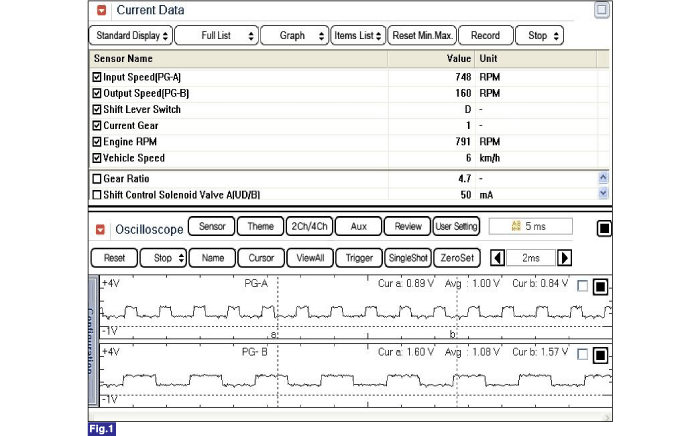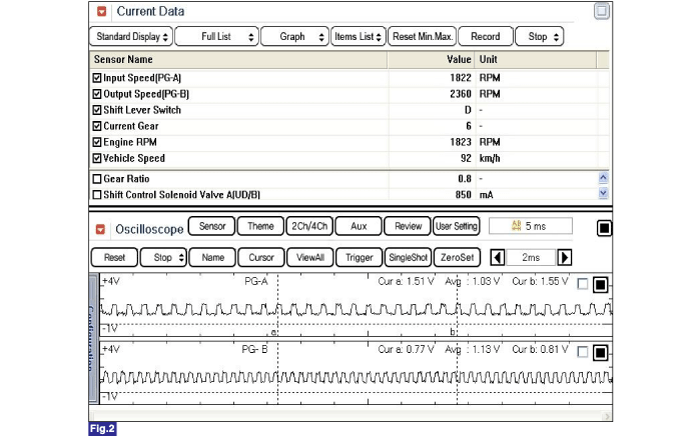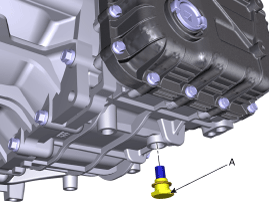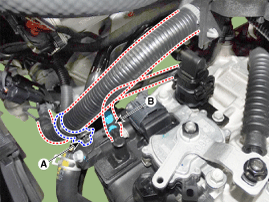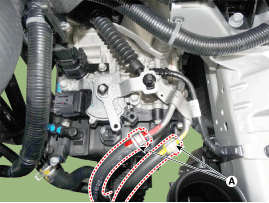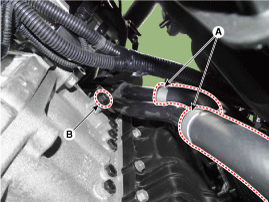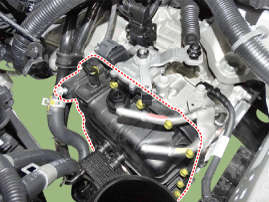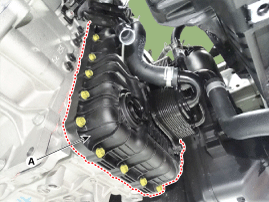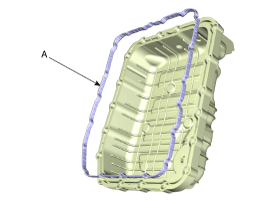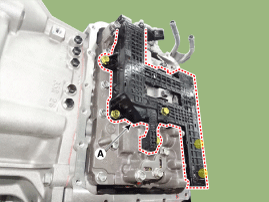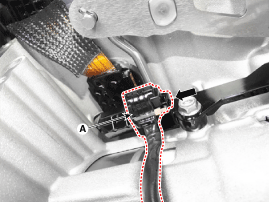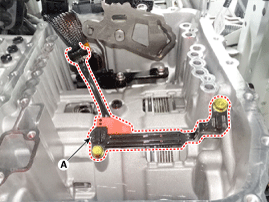Hyundai Elantra: Automatic Transaxle Control System / Output Speed Sensor Repair procedures
Hyundai Elantra AD (2016-2020) Service Manual / Automatic Transaxle System / Automatic Transaxle Control System / Output Speed Sensor Repair procedures
| Inspection |
| 1. |
Using the GDS, check the input/output speed sensor waveforms.
Fig 1) Input/Output speed sensor at low speed
Fig 2) Input/Output speed sensor at high speed
|
| Removal |
| 1. |
Remove the air cleaner assembly and air duct.
(Refer to Engine Mechanical System - "Air cleaner") |
| 2. |
Remove the drain plug (A) and drain the ATF totally and then reinstall the drain plug.
|
| 3. |
Remove the wiring mounting clip (A). |
| 4. |
Disconnect the air breather hose (B) from the valve body cover.
|
| 5. |
Disconnect the hose (A) after removing the automatic transaxle fluid cooler hose clamp.
|
| 6. |
Disconnect the ATF warmer hose (A). |
| 7. |
Remove the mounting bolt of the heater pipe.
|
| 8. |
Remove the valve body cover (A).
|
| 9. |
Disconnect the oil temperature sensor and solenoid valve connector (A) from the valve body.
|
| 10. |
Remove the valve body assembly (A).
|
| 11. |
Disconnect the input & output speed sensor connector (A).
|
| 12. |
Remove the input & output speed sensor (A) after removing the bolts(2ea).
|
| Installation |
| 1. |
To install, reverse the removal procedure. |
| 2. |
Check fluid level after filling the automatic transaxle with fluid.
(Refer to Hydraulic System - "Fluid") |
 Output Speed Sensor Schematic Diagrams
Output Speed Sensor Schematic Diagrams
Circuit Diagram
...
 Torque Converter Control Solenoid Valve (T/CON_VFS) Description and Operation
Torque Converter Control Solenoid Valve (T/CON_VFS) Description and Operation
Description
•
Torque converter control solenoid valve (T/CON_VFS) is attached to the valve body.
•
This variable force solenoid valve indirectly controls the hydraulic pressure inside ...
Other information:
Hyundai Elantra AD (2016-2020) Service Manual: ATF Warmer Description and Operation
Description
•
The ATF warmer is mounted on the valve body cover.
•
Engine coolant is used for circulating heat in order to heat and cool t he transaxle oil.
•
Rapidly elevates the transaxle oil temperature during the initial cold start of the engine.
•
Prevents ove ...
Hyundai Elantra AD (2016-2020) Service Manual: Components and Components Location
Components Location
1. Front strut assembly2. Drive shaft3. Steering gearbox4. Lower arm5. Sub frame6. Stabilizer bar7. Front knuckle assembly
...
© 2018-2025 www.helantraad.com

